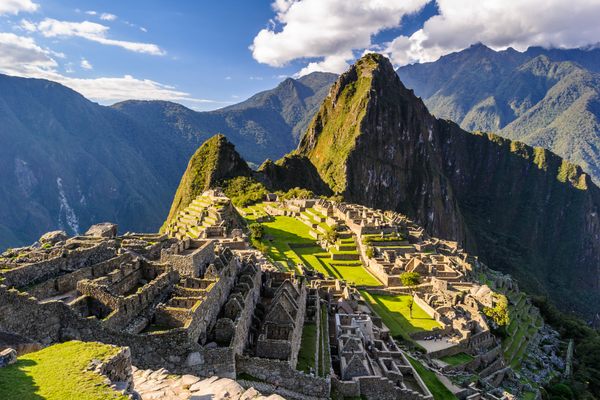Huascarán National Park
The highest tropical mountain range in the world is in Central Peru, home to a vast array of exotic and quirky plants and animals.
Near the small Peruvian city of Huaraz is Huascarán National Park, over 13,000 square miles that include the world’s highest tropical mountain range, and at over 22,000 feet, Peru’s highest peak.
The Park is named for its showiest mountain, which in turn is named for the Inca emperor Huascar. He didn’t reign for very long — only five short years in the middle of the 16th century — but his big snowy rock in the middle of the Cordillera Blanca (the White Mountain Range) in the central Andes rises high above all others in Peru. For a little perspective, the world’s tallest mountain, Mt. Everest, reaches 29,000 feet.
Since the 1980s, the Park has been a designated UNESCO World Heritage Site, and it also falls under the umbrella of SERNANP, the Peruvian network of protected natural areas. Aside from the cloud-scraping mountains, there is a lot to protect. There are tropical glaciers, pristine turquoise lakes, and hundreds of unique — and sometimes eccentric — plants and wildlife. A short list would include spectacled bears (who really do look like they’re wearing glasses), giant hummingbirds (well, giant by humming bird standards), South American camels (called Vicuñas, the national animal of Peru), and scrappy, ring-tailed Andean mountain cats. On the flora side, there are almost 800 different species of high-altitude plants, including the spectacular Queen of the Andes, which shoots a flowery stem 30 feet straight up from her spiky bottom.
It’s rugged, it’s high, it’s cold — and it can get shaky up there (earthquakes are fairly frequent). But Huascarán’s show-stopping terrain and delicately balanced ecosystems make for a National Park like no other.
Know Before You Go
It’s recommended to use authorized tourist companies (see links at the iPeru website), as specialized guides are required for boating, hiking, climbing, trekking, camping and other activities.
Temperatures vary at different altitudes, and it can get really cold depending on the height and the time of year. The rainy season is generally December through March, and prime tourist season is May through October.
The closest city is Huaraz, which you can fly to from Lima (the flight is about an hour), and there are also bus lines if you prefer an over-land journey (which takes about 8 hours).























Follow us on Twitter to get the latest on the world's hidden wonders.
Like us on Facebook to get the latest on the world's hidden wonders.
Follow us on Twitter Like us on Facebook